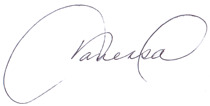Podcast: Play in new window | Download
Subscribe:
The One Secret To Accomplishing Anything & the Laws of Simplicity
Be sure to subscribe in iTunes and leave a review in the iTunes store! It helps others find the show! Thank you!
Feedback:
- We got some terrific voicemail feedback from John Bukenas from LetsReverseObesity.com. John’s podcast Let’s Reverse Obesity is fantastic! John is doing great things chronicling his weight loss and is helping so many others along the way.
- Thanks, John, for listening, subscribing, and taking the time to send us some feedback.
- We also got a very, very nice comment here on Episode 004 from Marshall Ponzi. Thank you Marshall for your kind words and you’re so right…it IS amazing what we can do without. And, I think we’d agree that doing without all the extra allows us to truly appreciate what we do have all the more.
- Marshall also has a terrific podcast over at InboundInFocus.com that gives great inbound marketing tips for business owners. If you’re a business owner you’d be well served to check out Marshalls podcast, Inbound In Focus, as well.
Main Topics:
Vanessa’s Topic: The One Secret To Accomplishing Anything
“I’m often asked what my secret is to being organized and how I get my clients to become more organized.”
The single most important component to becoming organized is commitment.
So why is commitment to change so difficult?
1. It’s not a priority….at least not yet.
2. Change is hard…even when you know it’s good for you.
3. It takes a lot of work…and that can be daunting and discouraging.
4. Unfortunately, often times people have to reach some sort of “breaking point.”
Vanessa highlights some of her efforts to change:
Finances
- $24K in debt
- Electricity and phone cut off
- Creditors hounding her for payments.
Fitness
- 40 lbs heavier than her current weight
Combined, the struggles led to:
- Low self esteem
- Depression
- Low energy
Keys to her commitment to change:
- Stopped playing the victim
- Committed to a lifestyle change vs “quick fix”
Results?
- Paid off debt in 2 years
- Rebuilt credit score
- Kept the weight off
- Better level of fitness than in high school (20 years ago! Wow! She’s OLD!)
Vanessa’s Truths:
- Truly believes “If I can do it, so can you!”
- One key is to be realistic about the change you want to make…and understand that it’s a process…not a quick fix.
- Be patient, systematic and strategic…otherwise you might do something you’ll regret or resent.
- One positive example is a blog she subscribes to, “Becoming Minimalist” by Joshua Becker. I like the word…Becoming…because it implies that it’s a process.
So, here are some points to ponder if you are thinking about making a change in your life:
1. Change your mindset…it’s a lifestyle change not a quick fix. Just like my progress with weight loss and fitness.
2. Change doesn’t happen overnight.
3. Realize that you may get discouraged at the task ahead. But don’t sell yourself short. You can do it! Again, think of it as a process and break it down into bite-sized chunks. (organize one space at a time…pay off one bill at a time…try one eating lifestyle or fitness plan at a time)
4. Realize that you may “fall of the wagon” and that maintaining your lifestyle may be difficult. Pick yourself back up, and hop back on the wagon!
5. Once you get in the groove, you’re probably going to get addicted! Ask Dan…I can be a real grouch if I’ve missed a few workouts and if my house gets too cluttered. That’s because I’ve gotten addicted to the results and love how they make me feel. Feeling comfortable in my clothing and in my home are incredibly elating. You’ll feel the same once you get in the groove. These are healthy addictions in my opinion.
6. You’ll start to build confidence! And reduce stress. You won’t have those negative thoughts lingering around in your mind. Instead you’ll be thinking about taking the next step…decreasing your debt further….trying a new fitness routine…shedding some more clutter…etc.
7. You’ll love the results! And the freedom you’ll experience. Creating goals and setting out to achieve them is one thing…accomplishing them is nothing short of AWESOME!
Dan’s Topic: The Laws of Simplicity
Laws of Simplicity by John Maeda
- John Maeda is the president of the Rhode Island School of Design, where his bio says he’s dedicated to linking design and technology.
- Entertaining TED talk on YouTube (link below)
- While the book covers more, Dan discussed just the ones below
- Actually “rules” more than “laws”
- There are some really terrific take aways
Some of the “Laws”
REDUCE – The simplest way to achieve simplicity is through thoughtful reduction
ORGANIZE – Organization makes a system of many appear fewer.
TIME – Savings in time feel like simplicity.
LEARN – Knowledge makes everything simpler.
DIFFERENCES – Simplicity and complexity need each other.
You can only appreciate “highs” if you’ve experienced “lows.”
CONTEXT – What lies in the periphery of simplicity is definitely not peripheral.
Think of this like “margin” … room in your schedule to breathe, margins on a sheet of paper that highlight what’s within the margin, etc… Simplicity is highlighted by margin.
FAILURE – Some things can never be made simple.
Yep! Unfortunately, this one is true and we just have to accept it.
THE ONE – Simplicity is about subtracting the obvious, and adding the meaningful.
Much like Dan’s quotation in Episode 001 from Antoine de Saint-Exupéry: “Perfection is achieved not when there is nothing left to add, but when there is nothing left to take away.”
Dan’s Musing’s About More Simplicity “Laws”
- Sometimes complicated leads to simple. (Example: Apps and computer programs are very complex in the programming/designing process; yet hopefully simple for the user).
- However, sometimes complicated leads to more complicated, as there is always a human element and relationships can easily be very complicated
- Positivity tends to lead to simplicity. Negativity tends to lead toward complication. Much like Sir Walter Scott’s line: “Oh what tangled webs we weave, when first we practise to deceive”
- Simple does not equate to easy.
- Over-planning for contingencies causes complexity. Considering Murphy’s Law (“If anything can go wrong, it will”), but don’t let it stifle simplicity.
The “Thing” Segment:
Vanessa: Vanessa’s “THING”: Vanessa discussed a client’s successes since implementing some strategies that Vanessa suggested during an organizing session. The client relayed how much more effective and easy organizing had become, how the Action File Vanessa recommended had drastically reduced their paper clutter, and how Evernote (after some “getting used to it” time) has become part of her workflow.
Dan: Being a “tech guy,” Dan talked about how much he loves RSS feeds. RSS stands for Really Simple Syndication and “pushes” out updates on blogs and podcasts so you don’t have to go searching for new episodes and “pull” them into your reader or audio device.
Dan’s RSS uses:
- He uses Google Reader to collect content from his RSS feeds.
- He links his Google Reader account to apps like Flipboard on the iPad
- Going through his feeds is part of his morning routine…like reading the paper used to be back in the day
Closing Thoughts:
If you like the show, please subscribe and consider giving us a good review in iTunes
If you know someone else who might enjoy the journey too, send them a link to SimpleLifeTogether.com
There are links to our Twitter and Google Plus profiles and other contact info on the left side of the website. We’d love to hear from you !
Be sure to leave comments below, send us a voicemail from the little microphone icon on the right side of the page, or you can go “old school” and email us! Comments, questions, thoughts, ideas, suggestions…they’re all welcome and we’d love to hear from you!
Links we mentioned in the show:
John Bukenas’ Let’s Reverse Obesity Blog and Podcast
Marshal Ponzi’s Inbound in Focus Blog and Podcast
Get Simplifized.com: Vanessa’s article, How to Create and Use an Action File.
Vanessa’s article The One Secret To Achieving Anything
Joshua Becker’s Becoming Minimalist BlogJohn Maeda’s Blog: lawsofsimplicity.com
John Maeda’s TED Talk: John Maeda on The Simple Life
Be sure to subscribe in iTunes and leave a review in the iTunes store! It helps others find the show! Thank you!
 Oh…My…Goodness! Is this a simple yet great tasting pie! And it is by far one of the easiest pies I’ve ever made. Just put all the ingredients in a blender…mix…pour into a pre-made graham cracker crust…and chill for 2 hours. That’s it! It doesn’t taste super sweet (at least not to me) and that’s probably because the only sugar is from the 10 oz of semi-sweet chocolate chips and the peanut butter (if you choose one with lots of sugar in it). I guess it’s kinda like a super-thick/firm mousse. Anyhoos…I like the simple taste and the simple prep!
Oh…My…Goodness! Is this a simple yet great tasting pie! And it is by far one of the easiest pies I’ve ever made. Just put all the ingredients in a blender…mix…pour into a pre-made graham cracker crust…and chill for 2 hours. That’s it! It doesn’t taste super sweet (at least not to me) and that’s probably because the only sugar is from the 10 oz of semi-sweet chocolate chips and the peanut butter (if you choose one with lots of sugar in it). I guess it’s kinda like a super-thick/firm mousse. Anyhoos…I like the simple taste and the simple prep!


